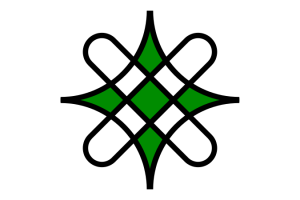Language/Hausa/Culture/Traditional-Clothing
Traditional clothing is an important aspect of Hausa culture. It not only reflects the fashion and style of the Hausa people, but it also has religious and cultural significance. In this lesson, you will learn about traditional Hausa clothing, its significance, and occasions when it is worn.
Significance of Traditional Hausa Clothing
Traditional Hausa clothing is known for its bright and colorful designs. The patterns and designs featured on traditional clothing are often intricate and symbolic. Designs can include a wide variety of geometric shapes, animals, plants, and even historic events. White is also a common color used in traditional Hausa clothing, as it represents purity and peace.
Apart from the aesthetic appeal, traditional Hausa clothing is also significant due to its religious and cultural connotations. For example, the large robes and headgear worn by Hausa men, known as babban riga, are often worn during religious ceremonies and celebrations such as Eid al-Fitr or Eid al-Adha. These robes are usually made from light, breathable fabric to protect against the heat of the sun. Women often wear brightly colored hijabs, or headscarves, as a symbol of modesty, and may also wear a matching wrapper, or skirt.
Traditional Hausa clothing is also used to reflect social status or identity. For example, a married Hausa man may wear a dress, known as robes or babban kaɗan, in a specific style to indicate that he is married. The style of the dress can vary based on region or social status. In addition, the size, color, and quality of the clothing can also indicate a person's identity or social standing.
Traditional Hausa Clothing for Men
Traditional Hausa clothing for men includes a variety of styles and designs. One of the most iconic styles of Hausa clothing for men is the babban riga. This is a large, loose-fitting robe that is worn over a shirt and trousers. The babban riga is often brightly colored and features intricate embroidery or embellishments. Men may also wear a matching cap, known as a fila, and sandals with this outfit.
Another popular style of traditional Hausa clothing for men is the jalabiya. This is a long shirt or tunic that is usually made from lightweight material. The jalabiya can be worn with trousers or a long skirt, and is often decorated with embroidery or other embellishments. The length and style of the jalabiya can vary based on region or social status.
Additionally, men in Hausa culture may wear a babban kaɗan, which is a long, flowing dress that is often worn with a matching cap. This style of dress is typically worn to formal events or celebrations such as weddings.
Traditional Hausa Clothing for Women
In traditional Hausa culture, women wear a variety of clothing styles that vary depending on region and social status. One of the most common styles of traditional clothing for women is the hijab, or headscarf. The hijab is worn to cover a woman's hair and is often brightly colored or patterned. Women may also wear a matching wrapper, or skirt, that is draped over the entire body.
Another popular style of traditional clothing for women is the boubou, which is a long, flowing dress that is often made from lightweight fabric. The boubou is typically worn by women for formal events or celebrations such as weddings. The dress can be embellished with embroidery, beading, or other decorations.
Some women in Hausa culture may also wear a kaftan, which is a long, loose-fitting dress that is often made from lightweight fabric. The kaftan can be embroidered or decorated with beads, sequins, or other embellishments, and is often worn for formal events or celebrations.
Occasions for Traditional Hausa Clothing
Traditional Hausa clothing is worn on a variety of occasions, including cultural and religious celebrations. For example, the babban riga and babban kaɗan are often worn by men during Eid al-Fitr or Eid al-Adha, which are Muslim holidays that mark the end of Ramadan and the Hajj pilgrimage, respectively. Women may wear a boubou or kaftan for these events as well.
Many Hausa people also wear traditional clothing for weddings or other formal events. Men may wear a babban riga or babban kaɗan, while women typically wear a boubou or kaftan. The clothing worn on these occasions is often brightly colored and decorated with intricate embroidery or other embellishments.
Conclusion
Traditional Hausa clothing is an important aspect of Hausa culture. It not only reflects the fashion and style of the Hausa people, but it also has religious and cultural significance. Designs and styles vary based on region and social status, and can include bright colors, embroidery, and other embellishments. Traditional clothing is worn on a variety of occasions, including religious and cultural celebrations, weddings, and other formal events. Through the clothing they wear, the Hausa people continue to share and celebrate their rich cultural heritage with the world.

